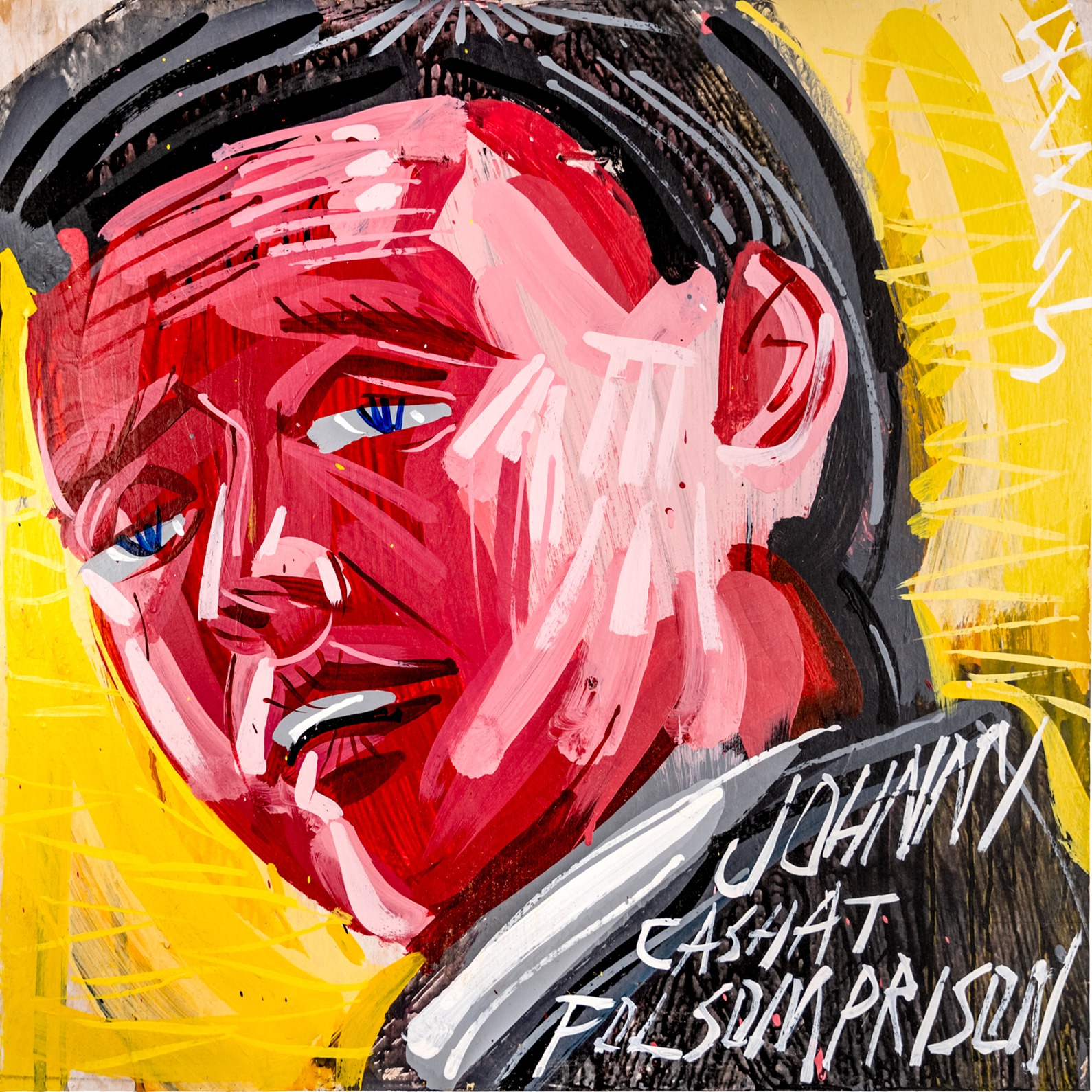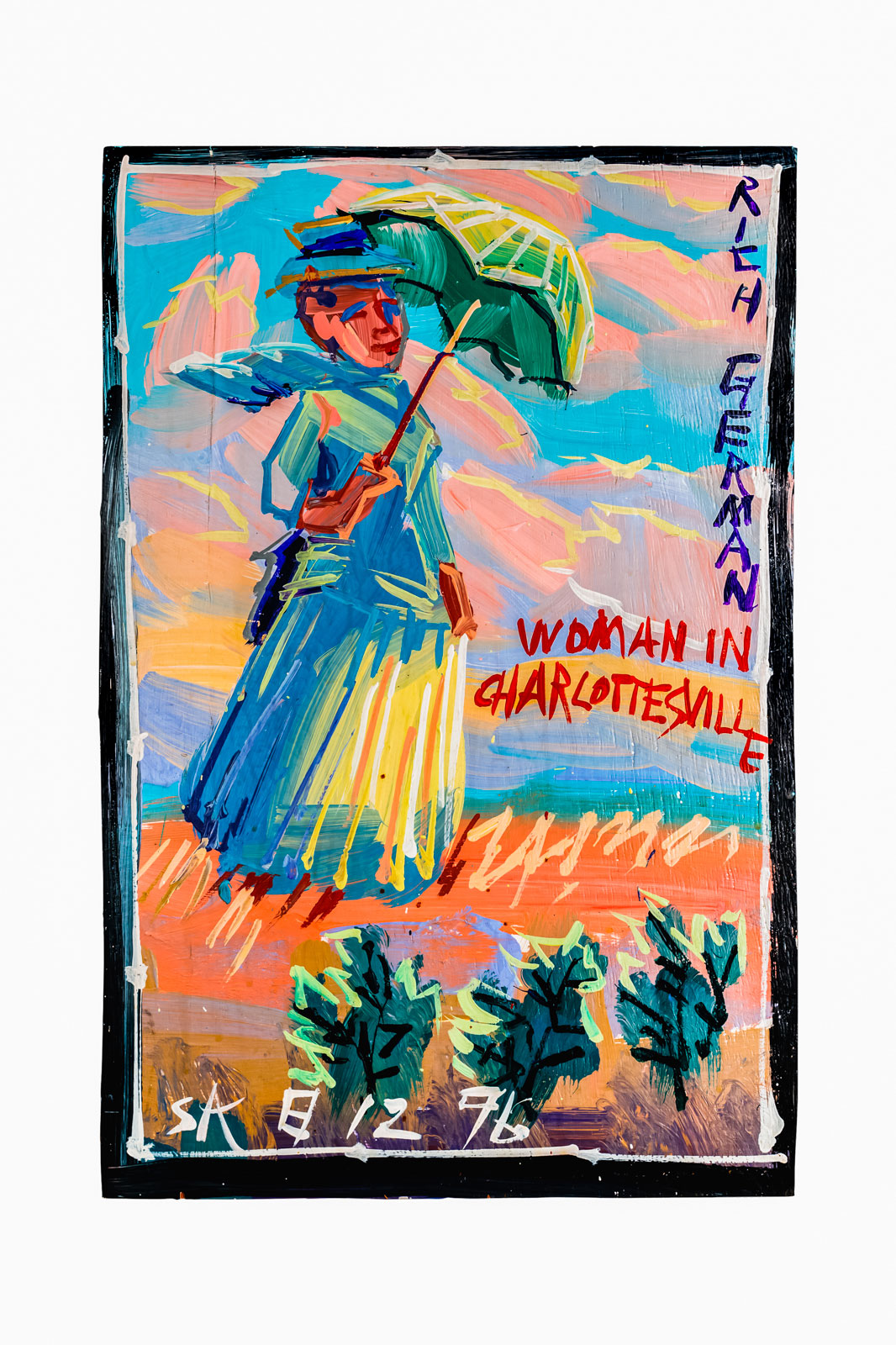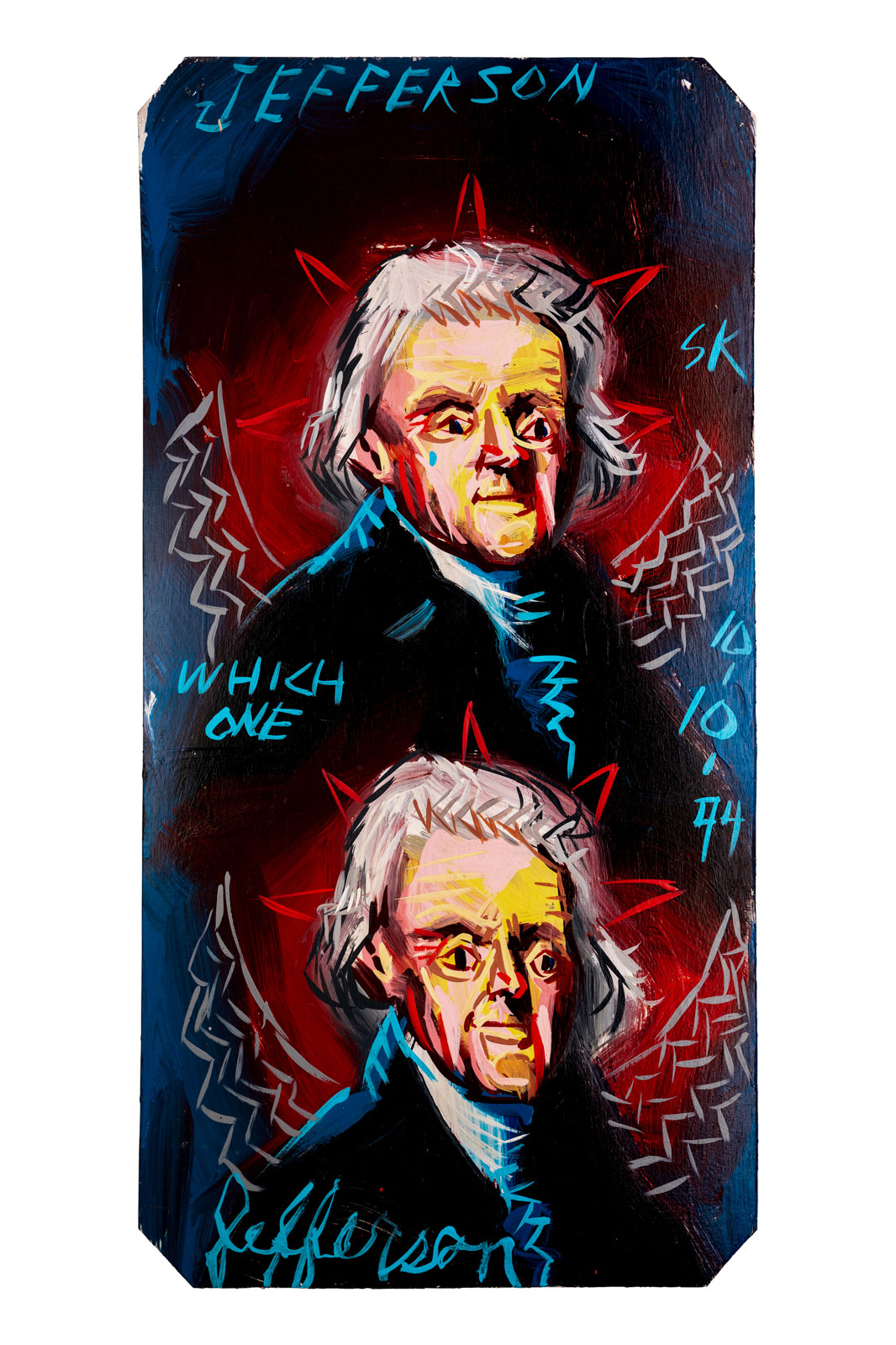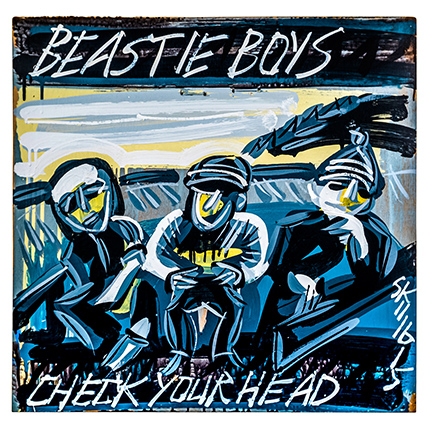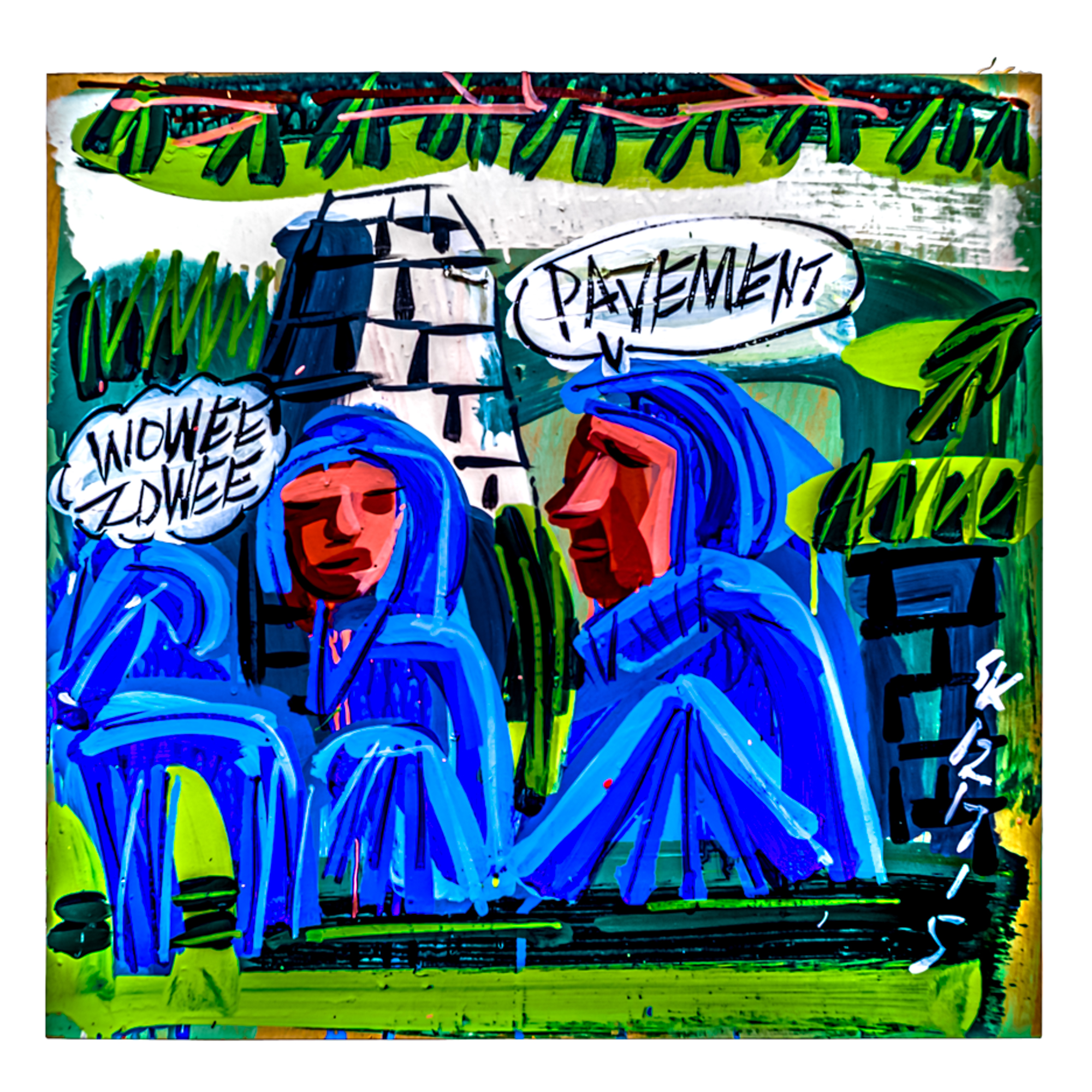For almost six days a week Steve Keene spends eight hours behind a chain-link fence—a secluded spot he refers to as a “cage.” Alternating loose brush strokes between dozens, sometimes hundreds, of plywood panels, the multimedia artist moves through his dedicated workspace with machine-like efficiency, starting and finishing each painting in the set simultaneously.
Though it may conjure images of a treacherous place, in Steve’s case the cage is simply a small section in the center of his Greenpoint studio. His home has a high-ceilinged, industrial interior that’s typical of northern Brooklyn, with buckets of paint clustered on the floor next to spare plywood. Clipboards with printed reference photos hang above the several batches of near-identical paintings he’s working on—most of them celebrity portraits or re-creations of iconic album covers: At Folsom Prison by Johnny Cash, Pin Ups by David Bowie, and Hey! Ho! Let’s Go: The Anthology by The Ramones.
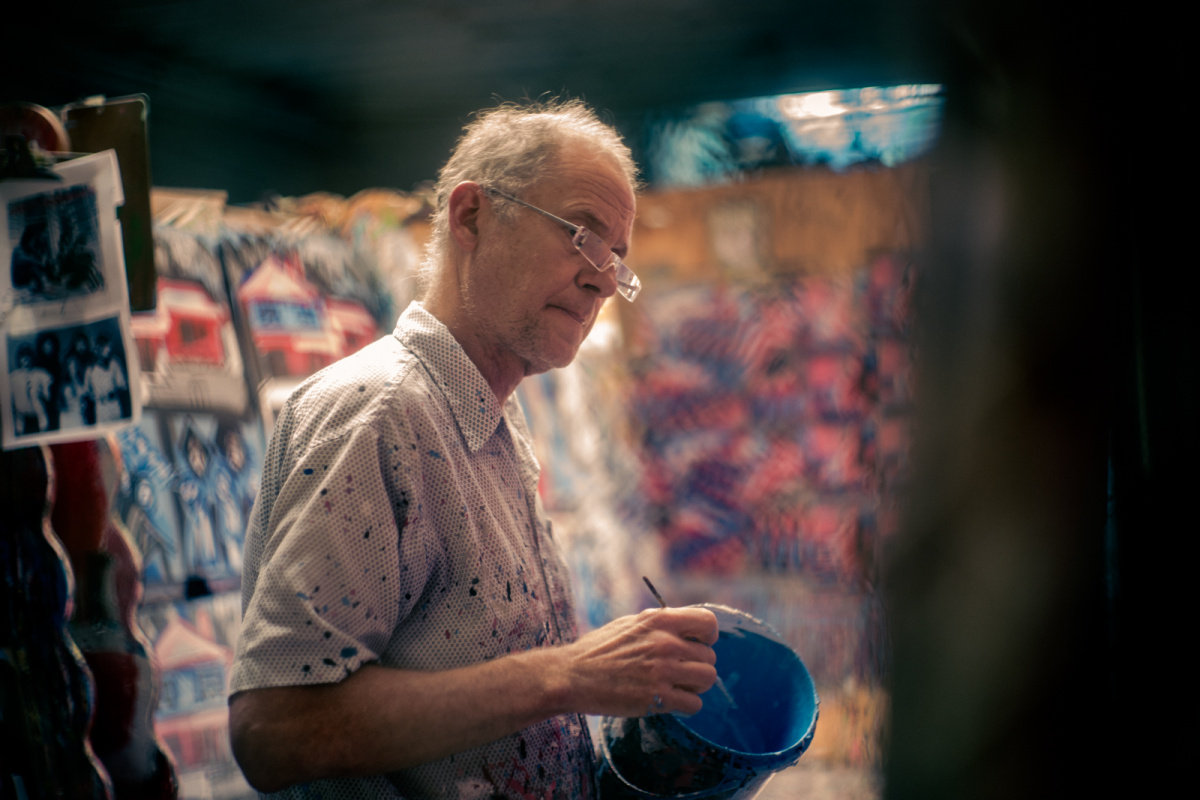
“I’ve never really been interested in worrying about whether my art was good or bad,” says painter Steve Keene. Photo by Daniel Efram
Steve is more than willing to describe his eccentric technique in detail when we meet for our interview one afternoon. “I’ll begin with one color and go through the whole range of panels, sort of like decorating 100 birthday cakes,” he says. He’s soft-spoken, wearing paint-stained clothes. ”I think of it as I’m in a restaurant, doing the same repetitive process over and over.” Recognized for his straightforward style and vivid color palette, the artist takes inspiration from books, his favorite music, and, occasionally, personal milestones. He recently painted a gift for his daughter’s 18th birthday, her smiling face represented across multiple panels in brilliant shades of red.
Before confining himself to the cage, Steve starts his mornings around 7 on the computer, looking up example images and creating designs on programs like Rhinoceros and AutoCAD. He feeds these sketches into his ShopBot machine, which outlines each of the wood panels he plans to paint. Producing upwards of 250 pieces every week, Steve has sold or given away a whopping 300,000 paintings in his lifetime—though by now he’s lost count.
- Photo by Daniel Efram / The Steve Keene Art Book
- Photo by Daniel Efram / The Steve Keene Art Book
After a set is complete he stacks it inside a giant crate in the middle of his studio, where it waits to be shipped or saved for future exhibitions. “There are all these open-ended narratives, little pieces that fit together,” he says. “Someone can buy many of my paintings and hang them on a wall to create a story.” Usually a mystery package with six pieces is available for purchase via his website, but he’s had to put this option on hold thanks to an influx in interest.
In June 2022 the first-ever book dedicated to his work—The Steve Keene Art Book—was published by Hat & Beard Press and Tractor Beam after a successful Kickstarter campaign. Compiled by photographer Daniel Efram, a longtime collaborator, the project evolved over the last six years, showcasing a selection of artworks spanning Steve’s decades-long career. “It’s my book, but it’s not only my book,” Steve says, humbly mentioning how the idea grew from a simple retrospective into a huge collective effort with crowdsourced pictures, thoughtful essays, and stories from old friends.
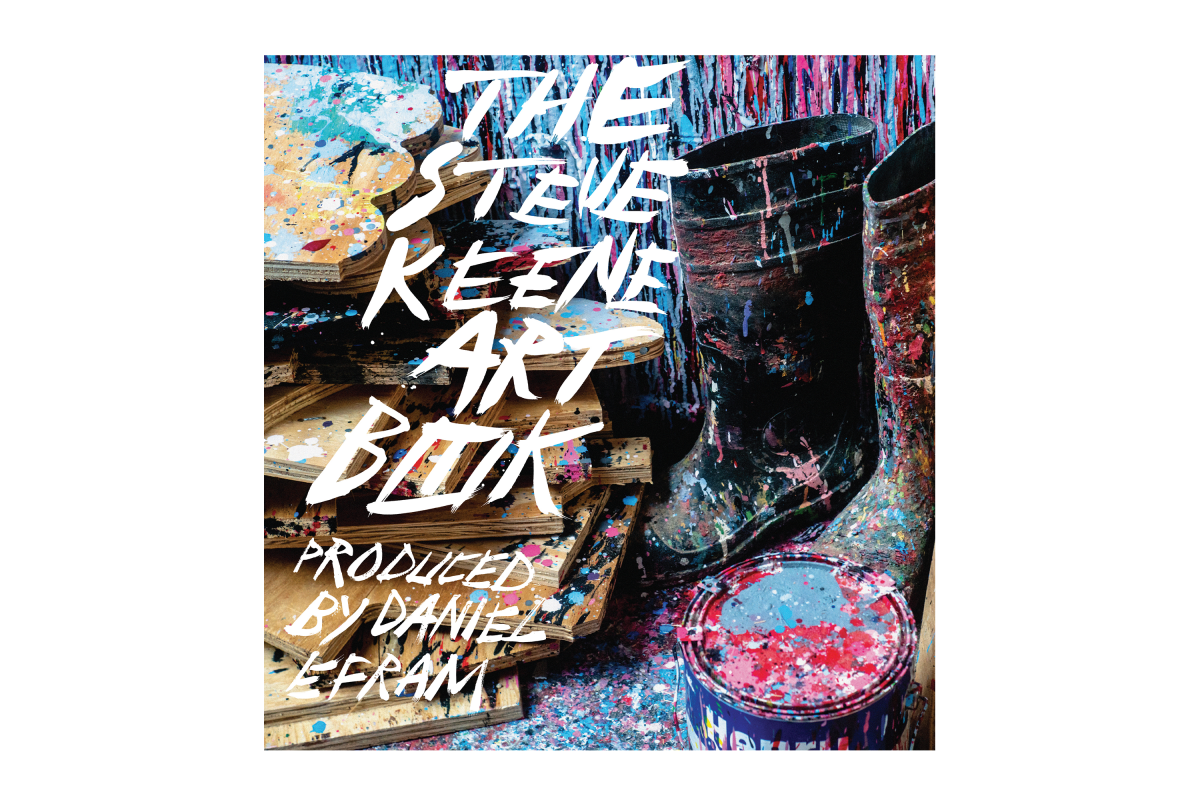
“The Steve Keene Art Book.” Available from Hat & Beard Press
Daniel says it was a labor of love. “In contrast to Steve’s ongoing 30-year art project bringing affordable art to the masses, my on-again, off-again six-year plus project making and distributing The Steve Keene Art Book seems modest,” he says. “It has been very challenging to get the correct mix of content, images, and text that attempt to put Steve’s importance in perspective, but a task that is necessary.”
Hailing from Charlottesville, Steve was always fascinated by outsider art and the freedom of expression offered by the indie music scene. He first dipped his toes into the creative industry at the University of Virginia, volunteering as a DJ at a nighttime radio station. Here he discovered an enthusiasm for fanzines, CDs, and other unorthodox methods of self-promotion, which he later nurtured at Yale while pursuing an MFA in painting and printmaking. Once he moved to New York City in the mid-’90s, Steve combined both passions by designing bold album covers and band posters for musicians like Silver Jews, the Dave Matthews Band, and Pavement.
- Photo by Daniel Efram / The Steve Keene Art Book
- Photo by Daniel Efram / The Steve Keene Art Book
“I went to art school. I did everything right,” he says. “But I’ve never really been interested in worrying about whether my art was good or bad or if I’m ever going to be respected. For me it’s more like a diary of my life day to day. “
As much as he enjoys the final product, Steve derives more pleasure from the art-making process. He relishes the visceral experience of touching and constructing his pieces, particularly at his in-person shows, which often feature live painting demonstrations. “In a way it’s a performance, like I’m a musician doing my own thing,” he says. “People enjoy watching me paint because it’s very immersive. Everyone can track my progress and see it come together in real-time.” Any fan with cash to spare can score a Steve Keene original before leaving at the end of the night, too.
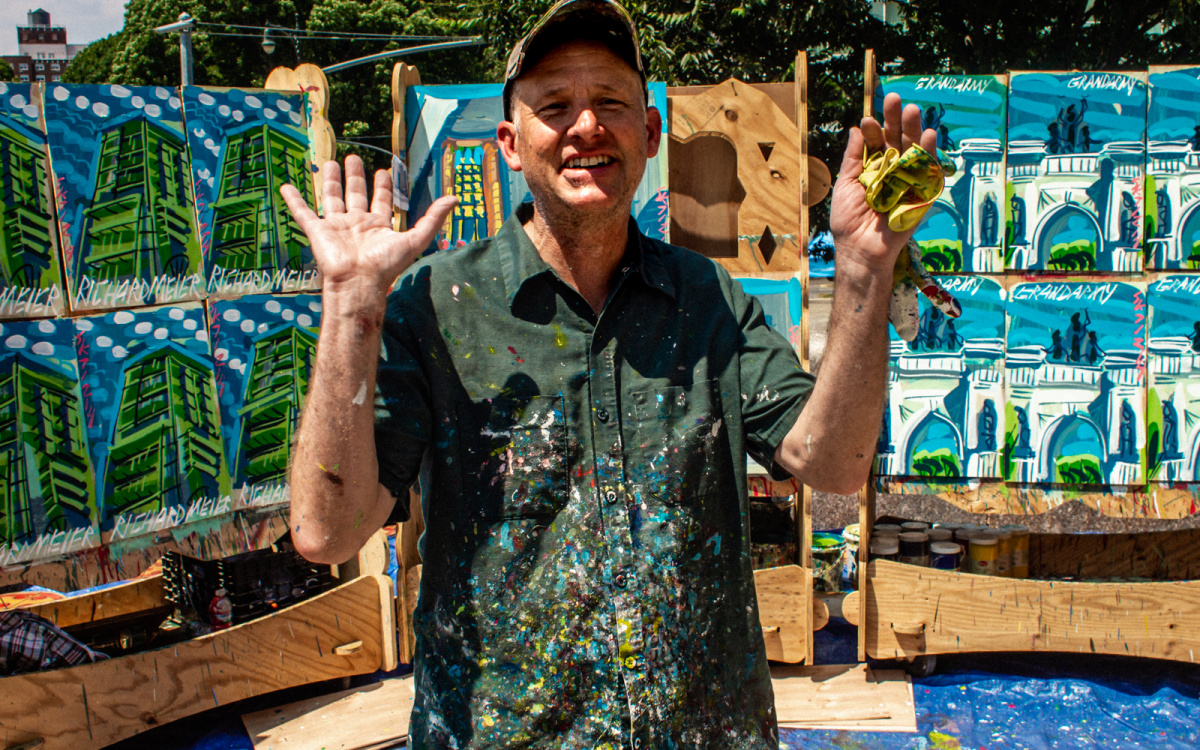
Steve Keene. Photo by Daniel Efram
Soon Steve will debut a similar interactive show in Brooklyn Heights to coincide with the launch of the new book. Borrowed from different periods of his extensive career, the art on display will include pieces from Daniel’s personal collection and some paintings even Steve hasn’t seen in a while. Until then he’ll be back in the comforts of his cage, hard at work with his paintbrush and ready to tackle whatever is thrown his way.
“I don’t ever wait for inspiration,” Steve says. “I feel incredibly lucky to do what I do, but ultimately it’s a job to me. I find an image I want to paint and I don’t look back.”
